While servicing Church Organs and Digital Pianos I am frequently being asked about Church Sound Systems. Since I have been around sound systems for years and have played in professional bands and in Church, I have picked up a fair amount of knowledge pertaining to sound systems and stage setups. I do not claim to be an expert, but there are significant numbers of those with little or no knowledge that I may be able to help. This is a general information document meant to give a basic idea of how sound systems work. Much of this info is already common knowledge and easily found on the internet. Perhaps this consolidation will be a good starting place.
Download Adobe Here
Basic Concepts
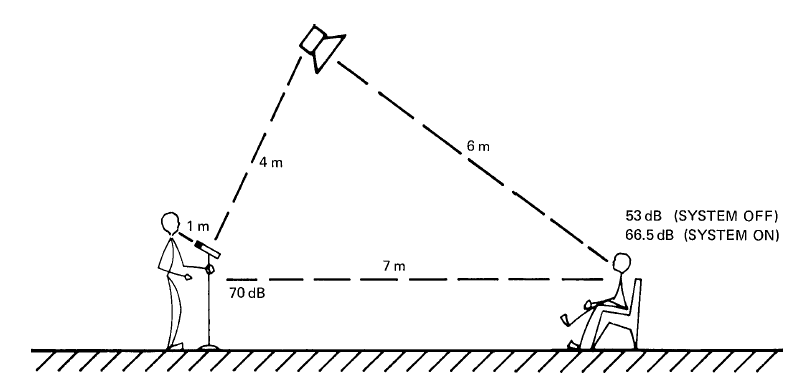
- The purpose of the sound system is to amplify an otherwise in-audible sound and project it to the most people possible in a comfortable pleasing way. Secondly, it should be able to satisfy the performers by way of a good monitoring system.
- One of the goals of the sound system is to be invisible and not noticed. If it is doing its job correctly, the audience should not really notice it especially after listening for a while. Usually the sound system is noticed when its doing something wrong. Too loud, feedback, distortion etc.
- In a traditional venue, sound should come from the stage and instruments. This may seem obvious but I have encountered Churches where the sound system speakers were in the back of the church hanging on the wall, pointing toward the Pulpit! If you think about it, walking into a building with a stage or pulpit, you would expect the sound to come from there, not the back. People will tend to seat themselves according to how close they are to the stage so they can control the depth of their involvement. For example some may not like loud volume and seat themselves accordingly. Having speakers in unusual places can ambush the unsuspecting person and leave them with a negative experience.
- The soundboard (mixer) should be located in front of the stage where the soundman can hear for the most part what the audience hears. Placing the soundboard on the stage or in a booth behind glass isolates it and limits the ability to adjust the board according to the needs of the audience.
Sound System Components
Microphones
 The Microphone is the first device in the system to capture a sound source and put it into the sound system. Many different types of mics are available for many different applications. There are mics for Vocals, Instruments, Choirs, Wireless etc.The mic pictured to the left is a Shure SM58 which is considered a standard of sorts for vocals and is a true workhorse.
The Microphone is the first device in the system to capture a sound source and put it into the sound system. Many different types of mics are available for many different applications. There are mics for Vocals, Instruments, Choirs, Wireless etc.The mic pictured to the left is a Shure SM58 which is considered a standard of sorts for vocals and is a true workhorse.
In the same family, the Shure SM57 is considered a good instrument mic.
Audio Systems Guide for Houses of Worship Courtesy of Shure
Soundboards
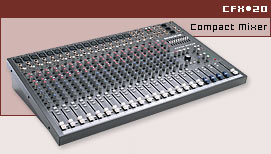 The nerve center of any sound system is the Sound Board. It is used to connect all microphones, instruments, and any CD or cassette players to your amplifier and speakers. The measure of a soundboard at it’s most basic level is the number of channels it has. A separate channel is needed for each mic, instrument etc. Secondly, the number of tone controls, auxiliary and effect sends on each channel.
The nerve center of any sound system is the Sound Board. It is used to connect all microphones, instruments, and any CD or cassette players to your amplifier and speakers. The measure of a soundboard at it’s most basic level is the number of channels it has. A separate channel is needed for each mic, instrument etc. Secondly, the number of tone controls, auxiliary and effect sends on each channel.
Tone controls are used to fine tune each channel and the more controls available, the more control you will have in fine tuning the sound. Usually tone controls are at fixed frequencies like the bass and treble controls. Many mixers offer a sweep-able midrange control which is a great asset for tone adjustment.
Auxiliary sends are typically used for monitors. Each additional Auxiliary send allows additional monitor mixes on stage.
Effect sends are for effect devices such as reverb, chorus, delay etc. Newer soundboards are beginning to offer quality digital effects built into the board itself.One rule on soundboards is…you can never have too many channels!
Equalizers
 The next component in the system would be the Equalizer. Typically the output of the soundboard would go to Equalizers (EQ) which are used to tailor the sound system to the room acoustics. One example would be to compensate for feedback frequencies caused by the room acoustics. These may be set once and as long as no significant changes are made to the system or room acoustics, left alone. These can be located either near the soundboard or the amplifiers.
The next component in the system would be the Equalizer. Typically the output of the soundboard would go to Equalizers (EQ) which are used to tailor the sound system to the room acoustics. One example would be to compensate for feedback frequencies caused by the room acoustics. These may be set once and as long as no significant changes are made to the system or room acoustics, left alone. These can be located either near the soundboard or the amplifiers.
Basics of Equalization and Feedback Courtesy of Shure
Amplifier
 The next component is the Amplifier. These are selected mostly by power and name brand for reliability. The amplifiers should match the speakers in the power rating. Additional power is acceptable but never less. These can and should be located near the speakers and not necessarily near the soundboard. The closer they are to the speakers, the shorter the speaker wires can be and less power is lost due to long speaker wires.
The next component is the Amplifier. These are selected mostly by power and name brand for reliability. The amplifiers should match the speakers in the power rating. Additional power is acceptable but never less. These can and should be located near the speakers and not necessarily near the soundboard. The closer they are to the speakers, the shorter the speaker wires can be and less power is lost due to long speaker wires.
Speakers
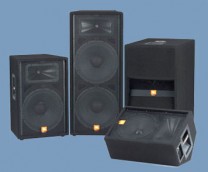 The main speakers should be located at the front of the stage and just in front of the most forward microphone. This is to keep down feedback. The size should be judged by the size of the room and the quality of the sound needed. Also, keep in mind what will be sent through these speakers. The prerecorded music from CD’s etc. and all mics are minimum. Some may want to send various instruments through the system and this will place more demand on the system. Larger speakers don’t necessarily mean louder, but just as importantly, a fuller sound.
The main speakers should be located at the front of the stage and just in front of the most forward microphone. This is to keep down feedback. The size should be judged by the size of the room and the quality of the sound needed. Also, keep in mind what will be sent through these speakers. The prerecorded music from CD’s etc. and all mics are minimum. Some may want to send various instruments through the system and this will place more demand on the system. Larger speakers don’t necessarily mean louder, but just as importantly, a fuller sound.
Snake
 A snake is a special cable used to extend the soundboard inputs and outputs so the board is free to be located in the best possible position. Remember the number of channels in your board should match the number of channels in your snake. If you have an 8 channel snake, it won’t help to have 20 channels on your board. There are some exceptions though. Wireless mics, CD players, Cassette players, etc. don’t have to go through the snake. You may want to get additional snake channels if you believe you may upgrade your mixer at a later date.
A snake is a special cable used to extend the soundboard inputs and outputs so the board is free to be located in the best possible position. Remember the number of channels in your board should match the number of channels in your snake. If you have an 8 channel snake, it won’t help to have 20 channels on your board. There are some exceptions though. Wireless mics, CD players, Cassette players, etc. don’t have to go through the snake. You may want to get additional snake channels if you believe you may upgrade your mixer at a later date.
Effects Processors
![]() Effect devices can be used to enhance the overall sound of your system and to provide special effects. Some popular FX’s are, Reverb, Chorus, Delay, Compression.
Effect devices can be used to enhance the overall sound of your system and to provide special effects. Some popular FX’s are, Reverb, Chorus, Delay, Compression.
Reverb can be used to liven up a “dead” room or add a touch of sparkle and fullness to a vocalist.
Chorus can be used to make a choir sound fuller, or add depth to an acoustic guitar.
Delay can be used as an effect to make something sound farther away or in a larger space. It can also be used to tame time delays in very long rooms.
Monitor Speaker
 Monitor speakers are used to provide sound to the performers and speaker. Monitors come in a variety of sizes. The larger the monitor, the fuller the sound. The smaller monitors can be less conspicuous on stage. In-ear monitors are the least conspicuous. An example of a basic monitor would be a singer who needs to hear their voice and needs to hear the music they are singing with. A floor monitor that the singer stands in front of is a good choice. The size will depend on the need of a good full sound balanced with costs.
Monitor speakers are used to provide sound to the performers and speaker. Monitors come in a variety of sizes. The larger the monitor, the fuller the sound. The smaller monitors can be less conspicuous on stage. In-ear monitors are the least conspicuous. An example of a basic monitor would be a singer who needs to hear their voice and needs to hear the music they are singing with. A floor monitor that the singer stands in front of is a good choice. The size will depend on the need of a good full sound balanced with costs.
Mono and Stereo
Should you run your system in mono or stereo?
Past conventional wisdom was to run a system in mono. The reasoning was and still is that a system running in mono, will have the proper mix to all audience members no matter where they sit. Since the same sound is present in all speakers, you would hear the same thing on one side of the room as you would on the other. Since stereo usually means that there is a difference in the material from one speaker to the next, then it could mean that the only good seating would be in the middle of the stereo field and sitting on the sides would create the possibility of an improper mix. Other advantages to mono are less number of EQ’s, simpler wiring.
More recently, stereo systems are becoming more common due to a number of reasons. First, source material such as CD’s, Cassette tapes, and effects are in stereo. Also, main speakers are being placed up high in the center of the stage so that the separation of left and right is minimal. So if the distance of left and right is minimal, why run in stereo at all?
Source material that is created in stereo, will sound closer to what it was intended to sound like when played back in stereo. If you connect a stereo keyboard for example to a mono system, you have to make a choice of taking one channel, or mixing both channels. Taking one channel will cause the sound to be somewhat less full than the normal stereo sound. Mixing both channels into mono can be worse because you are forcing together signals that are in phase, out of phase, or changing phase dynamically. When signals are out of phase, they cancel each other out. When they are in phase, they increase in volume. When the channels are kept separate, these phase cancellations occur in the room acoustics and are less obvious. However, the effect is greatly exaggerated by combining the channels electronically. This exaggerated effect is undesirable. It can make a keyboard for example sound synthetic and too electronic. It can make the effects sound like this also.
Microphone Tips
TYPES
The microphone is the first device to capture the source material into the sound system. Using quality microphones makes a very positive difference to the over all system. Vocal microphones should have built in wind screens. Wind screens are not needed for instrument microphones. Pulpit microphones are great for a permanently mounted microphone. They have a very small profile and a huge sound. Choir microphones are similar to pulpit microphones but hang from the ceiling over the choir. Wireless microphone come in hand held and lavaliere types. A minister may want to use a lavaliere wireless so they can be free to move around. These also work well with drama members. A hand held wireless microphone works well soloist, guest singers, or events where the mic needs to be passed around.
IMPEDANCE
Professional microphones are wired as low impedance. Low impedance wiring allows for longer cables and lower noise. The sound board can typically be 100′ from the stage. This means the cables from the microphone to the board equal 100′ or more. Only low impedance wiring should be used for any length of cable over 20′.
MICROPHONES for INSTRUMENTS
Obviously microphones are used for speakers and singers but they are also used for certain instruments. Instruments that may require a microphone include acoustic guitars, guitar amps, piano, drums etc. When you mic an instrument, the position of the microphone will make a big difference. It is usually trial and error to find the best microphone position. In general, positioning the microphone as close as possible to the source is best. The closer the microphone is to the source, the better capture of the source and the better noise rejection of nearby sound sources. Placing the microphone too close to a really loud source could cause distortion. If the source is loud enough to do this, it may not need a mic or the microphone can be placed farther away.
WHEN TO MIC AN INSTRUMENT
More and more, churches are investing in larger sound systems that are very sophisticated. To gain more control over the entire sound, instruments are being sent through the sound system giving the sound person complete control over the mix. In a smaller church, it usually isn’t necessary to add instruments into the sound system. If however, an instrument is weak in volume compared to the mix in the system, it may need a microphone to help it balance to the other instruments.
Another technique being used is to add an instrument into the sound system to make is quieter. For example, say the electric guitar player tends to play too loud, you can have him or her face their amp to the back of the stage with a microphone on it. This way, the amplifier acts as their monitor and the sound system can put the proper amount of guitar into the mix out front.
The drums can be isolated acoustically with clear plastic dividers and adding microphones behind the plastic allows the sound person to bring just the right amount of drum volume into the mix. This also accounts for the growing popularity of electronic drums, which make no sound outside its electronic outputs connected to speakers.
In large churches, some instrument speakers may even be located off stage with a microphone. An example might be locating the Organ Leslie speaker off stage and placing two microphones on it, one for the top rotor and one for the bottom rotor. Now in this case, remember the organist still needs to hear the organ in order to play it so a very strong monitor will be necessary.
Microphone Techniques Courtesy of Shure
Feedback
Here’s what you can do to reduce or eliminate feedback in order of preference:
(Most people try the last step first!)
- Move microphone closer to sources.
- Move loudspeakers farther from microphones.
- Move loudspeakers closer to listeners.
- Reduce the number of open microphones.
- Use directional microphones and loudspeakers.
- Eliminate acoustic reflections near microphones.
- Reduce room reverberation with acoustic treatment.
- Use equalizers to reduce system gain at feedback frequencies.
Mixer Tips
FADERS
Set the faders at the unity gain position or about 2/3’s the way up. Then use the input gain controls to reach a basic balance or mix. Then use the faders to fine tune the mix. This way, your faders will be more uniform and it makes it easier to “see” the mix by looking at the faders.
OUTPUT LEVEL
While playing music through your system, adjust the amplifier volume controls so that your mixer output levels will be set where the output meters give a good reading. For “normal” room volume, your meters should read close to zero DB, or unity. Check out the following Link from Rane.
TONE
When adjusting the tone controls, always try to reduce an unwanted band rather than boost one. For example, if the bass is weak, try reducing the treble a little and compensate by turning up the fader. Also, use the tone controls minimally. Too much adjustment creates more distortion of the signal. A very handy type of tone control is the sweep-able controls. They will offer a cut/gain and a frequency select. A very quick fix for feedback is to set the sweep gain high, and slowly turn the frequency control until you find the feedback spot. Then turn down the gain to cut that frequency. For a vocal track I like to boost the sweep gain and slowly turn the freq to find the spot where the vocalist sounds crisp and airy. Then cut the gain back for a more modest boost. The point here is to exaggerate the gain of the sweep control to “find” the frequency your looking for, then reduce it to a normal setting.
EFFECTS
Each channel has an effects send control (Some have more than one) which allow you to send an amount of each channel to the effects processor. For example, a singers voice may be enhanced by adding a touch of reverb. An acoustic guitar can be enhanced by adding a little chorus. If you have two sends per channel, you could have different effects on each send. Keep in mind that effects are easily over used and not always needed. An example might be when a singer finishes singing and begins to speak, the effects should be muted or greatly reduced. Most effect processors have stereo outputs. Many sound operators like to run the output of the effect to unused channels. This way you have the benefit of tone controls and the ability to send effects to the monitors.
AUXILIARY
The auxiliary control sends are usually used for monitor mixes. A single monitor mix is probably the most common. However, many boards have more than one Aux control so multiple monitor mixes are possible. Say the singers mainly want to hear the vocals and not any instruments in their monitors. Then, the instrumentalist want to hear each other and the lead vocalist in their monitors. With two Aux sends per channel, you can create two different mixes in your monitors. Remember that each monitor “mix” will require separate amps and graphic EQ’s. Many Aux sends have the ability to be set as “PRE” or “POST”. This means pre or post fader. Pre means the Aux signal will be taken before the fader. This means that any changes to the fader will not affect the Aux signal. Post means the signal is taken after the fader so any changes to the fader will also be applied to the Aux signal. Usually, pre fader is appropriate for monitors. If the level of a vocalist is increased for example, their monitor would remain unchanged. If the Aux was set as post, then increasing the level of the vocalist channel would also increase their monitor signal and could cause feedback.
PANNING
The pan control will adjust the channel from left to right in the main speakers if running in stereo. These are mostly set to equal left and right. However, if you were using two channels for a stereo source, one channel would be panned left and the other right. Also, you could use a slight amount of panning the adjust the signal according to where the source is located. For example, if you had your singers on the left side of the stage, you could slightly pan their channels to the left to give the listener a sense of their voices coming from them, not the speakers. These kind of settings should be minimal so to not cause listeners on opposite sides of the room to be unable to hear everything. If two channels were being used for the effect returns, they would also be set one panned left, the other panned right. If your system is being run in mono, then the pan controls have no real purpose.
Equalizer Tips
The most common Equalizer is the graphic equalizer. These come in both number of channels and number of bands. The number of channels simply means one or two channels. A two channel EQ can be used in a stereo system. You could also use it on two different monitor mixes. The number of bands refers to how many bands the EQ divides the sound spectrum up into. Common models are 10, 12, 15, 31. The more bands you have, the better control you will have.
One purpose of the graphic EQ is to adjust your speakers so that they better match the room acoustics. If you had a “ring” in the sound caused by the room, you could “find” the band that controls that frequency and reduce its gain. Another purpose of graphic EQ’s is to allow the system to have more volume with less feedback. As you turn up your system, feedback will occur. The EQ can be adjusted to reduce the feedback allowing the volume to be turned up even higher. This is especially important on monitor speakers. Since they are so close to the mics, feedback almost always occurs there. The graphics can be adjusted to tame this problem.
Another purpose of EQ’s is simply to make the system sound better. For example singers usually perform better if they can hear themselves with a lot of clarity and fullness. Remember that an EQ isn’t going to make a bad system sound like a good one. Like the tone controls on the board, the goal is to use the least amount of adjustment to get the job done as too much EQ causes distortion.
When setting up a system it’s a good idea to rent a spectrum analyzer. This device runs a signal into your system called pink noise. This is a signal that has the same energy in all bands. The analyzer portion has a display that shows how much energy each channel has. There is a calibrated microphone attached. While looking at the display, you can quickly identify room acoustic problems. Then you can use the graphic EQ to compensate for the room. This won’t be the final say on these adjustments, but you get into the ball park real fast.
From there, run different music you are familiar with through the system and make fine adjustments. If your EQ has an in/out switch, compare your EQ’ed signal to no EQ. This also helps you to not over use it. Once the EQ’s are set, hide them. Covers are available to prevent anyone from changing the settings. You shouldn’t have to adjust them during normal operation.
Amplifier Tips
Amplifiers are an essential part of the system. They determine to overall power of the system. The basic specification of an amplifier is the power rating. This rating is usually listed per channel at a certain load (ohms) with a rating in watts. An example is 200 watts RMS per Channel into 8 ohms. A more precise rating would be 200 watts RMS at .1% HD both channels driven into 8 ohms 20hz to 20Khz. This means the amplifier is being tested with both channels running which is the way you will be using it. Also, the .1% Harmonic Distortion means the amp is providing this amount of power at a low distortion level throughout the entire hearing range. The amp should also give a power rating at 4 ohms. This rating should be about 50% higher than the 8 ohm rating. In this example, the 4 ohm rating should be 300 watts.
Single speakers are commonly rated at 8 ohms. If you connect two 8 ohm speakers to one channel of an amplifier, the load changes to 4 ohms. (Parallel resistance divides) So in the above amplifier example, a single speaker would be driven with 200 watts, while two would be driven with 150 watts each. Some amps can certainly go lower than 4 ohms and some even have ratings at 2 ohms. I personally think not going lower than 4 ohms is a good idea. This means not connecting more than two 8 ohm speakers per channel. This may require more amplifiers in the system but it also means not pushing the amps too hard and having the benefit of redundant amp channels.


How to Compare Amplifier Power Ratings by Patrick Quilter
The pastor has just given you the OK to purchase a much-needed power amplifier. So you start your hunt, collecting stacks of product specification sheets to compare the specifications. After all, you can count on the numbers, right?Wrong. Unfortunately, the reality is that product specifications aren’t as straightforward as they seem, and can easily be misinterpreted. But you wont get stuck comparing apples to oranges if you know how to decipher the numbers to get the story behind the specs.Although there are numerous specifications used to measure amplifier performance including noise, harmonic distortion, etc., this article will focus on comparing amplifier power ratings, one of the most important specs when looking for the right amplifier to match your speakers. Most amplifiers from reputable companies will have good performance within their power ratings.
Variables
Measuring amplifier power depends on several variables. The first variable is the level of distortion present in the amplifier output when making the measurement. If you drive an amplifier so that it occasionally clips (let’s say with 1% THD), you will measure more power than if you reduce the output so you only have 0.1% THD. This is one way manufacturers can show higher power numbers.The second variable is the frequency range across which the power is measured. If you measure power at a single frequency, typically mid-band at 1 Khz, you will see higher numbers than if you measure over the entire audio spectrum (20 Hz- 20Khz). This is because power tends to roll off at lower frequencies, and distortion tends to rise at high frequencies.
A Tale of Two Standards
Thankfully, there are two common standards that make it easier to compare amplifier output ratings: FTC and EIA. The FTC standard, established by the Federal Trade Commission, requires a manufacturer’s stated power rating must be met, with both channels driven, over the advertised frequency range – usually 20 Hz to 20 Khz – at no more than the rated total harmonic distortion (or THD). See Example 1.
The EIA rating, established by The Electronic Industries Association, reflects the power output for a single channel driven at mid-band – typically 1 Khz – with 1% THD clipping. This standard (shown in Example 2) inflates the amplifier’s power points to 10 to 20% higher than the FTC ratings.
Of the two, the FTC rating tells you much more about the product than the EIA rating. The FTC rating gives you the average power output for both channels over a wide frequency range and lower distortion level. This is a much more conservative – and realistic – measure of an amplifier’s average output power. But in order to claim more power, some manufacturers might list only the EIA numbers; others will disclose both FTC and EIA output ratings enabling you to easily compare manufacturer’s specs.
Two-ohm Catch
Most manufacturers, however, don’t publish a 2-ohm FTC spec even if the amplifier can easily handle normal program material into a 2-ohm load. An FTC rating requires that the amp undergo a “warm-up” test, meaning the amp’s output ratings are measured after 60 minutes at 1/3 power and five minutes at full-rated power. Since 2-ohm operation is right on the edge of where an amp’s current-limiting protection circuits will kick in, the amp will automatically go into protection mode before the five-minute threshold. Fortunately, music waveforms are less demanding than constant-level sine waves or pink noise used for testing. Because of this, most manufacturers only list the EIA power rating for 2-ohm operation.
More Than Just Power
Now that you know how to read the numbers, should you always buy the amplifier that has an extra 10% more power? Not necessarily. To hear a difference in loudness, you typically need to double the power going to your speakers. In other words, you will hear the difference between 400 watts to 800 watts, a 3 dB increase, but you won’t hear a difference between 400 watts and 440 watts (+0.4 dB). Bottom line: A minimal difference in watts isn’t audible, so don’t trade off other important amplifier features, such as reliability and sonic clarity, for a little more power.
Read the Fine Print
Just like all product specifications, read advertised power points carefully. The numbers can be misleading unless you know what you’re comparing. Whether you use FTC or EIA ratings, the important thing is that you compare measurements using the same standards for frequency range and distortion.
Understanding what ratings standards are behind power point claims is a fundamental first step in choosing the right amplifiers for your speakers. And that can mean the difference between a downed sound system on Sunday and one that’s perfectly matched so that the show – or service – goes on.
Example 1
A “150W amp” as measured by the FTC Standard Specification
Continuous Average Output on Both Channels Driven
8 ohms, 20 Hz to 20 Khz, 0.1% THD = 150 watts
(The unpublished EIA rating might be as high as 175-185W at 1Khz, 1% clipping)
Example 2
A “170W amp” as measured by the EIA Standard Specification
8 ohms, 1 Khz, 1 % THD = 170 watts
(The unpublished FTC rating might be as low as 135W, 20Hz to 20kHz, 0.1% THD).
Patrick H. Quilter is founder and chief technical officer of QSC Audio Products, Inc. www.qscaudio.com or info@qscaudio.com
Effect Processor Tips
Effect processors are typically used to “sweeten” the sound. There are numerous applications FX’s are used in.
REVERB
Reverb is a series of reflections made from the walls, ceiling, floor, and other hard surfaces in a room. The larger the room, the longer reverb times you will realize. If you clap your hands one time in a room and then listen for how long the reflections lasts, this is the reverb time. A small room may have .5 to 1.5 seconds. A very large room may have upwards to 5 seconds.
If your room has plenty of natural reverb, you may not need any additional reverb from an effects processor. If on the other hand, if you have little natural reverb, then additional reverb may give you a deeper dimension to your sound.
Reverb is a great effect for vocals. Not only does it add depth to the overall sound, today’s processors add space in the sense that they are stereo devices. Reverb will seem to make the room sound larger. It can actually be applied to many instruments with great results.
Please understand that reverb is commonly over-used. It should be added just to the point of perception. Too much reverb causes the original sound to loose it’s clarity and definition. Also, reverb does not sound natural on the spoken word. Or I should say that the amount that might sound great on singing, would likely be too much for speaking. Some method of reducing or even turning off the reverb when a singer starts to talk for example would make for a more professional sound.
Reverb is also useful in the vocal monitors. Singers tend to sing in a more inspired fashion if they hear themselves with some reverb on their voice.
CHORUS
Chorus effects are used to widen or thicken a sound. Chorus effects shift the pitch of the source in a regular repeating fashion. Some processors will use their stereo outputs to create a stereo sound from a mono source. So chorus may be used to make a mono source sound stereo.
Chorus can also make a source sound like multiple sources. You could apply it to a 6-string guitar and actually make it sound “like” a 12-string. Chorus processors have many adjustments to accomplish these differing effects. Again, too much chorus will sound bad. Usually adjusting it just to the point of perception will be a nice starting place. Too much will make the source sound artificial.
Another variation of chorus is pitch shifting. This is where a pitch is shifted to a specific amount and it doesn’t change. This is useful again for making the source sound larger and fuller. If your processor can send the unaffected signal to one output, and the shifted signal to the other output, then with these outputs applied to the soundboard, it can be adjusted to create the sense if a larger room like reverb does but without the reflections and loss of definition. In other words, you can apply much more of this effect for the “larger space” effect without detrimental consequences.
DELAY
Delay is an effect that simply delays a signal by an adjustable amount. You could even have each output of the processor have a different amount of delay. There is a ping pong delay that bounces back and forth between the outputs. Delay would normally be considered a special effect. An effect that might be used on certain songs or maybe certain instruments on certain songs. This effect is very obvious and can be easily over-used.
Delay can also be used as a tool to help tame long buildings. For example, the sound reaching the rear of a long building will be delayed slightly from the sound leaving the stage. If you placed reinforcement speakers in the rear of the church the sound in those speakers would sound like they were ahead of the sound from the stage causing a delayed effect. By using a delay processor, you could apply an equal amount of delay into the rear speakers that matches the delay from the stage. This way, the sound from the speakers will not sound out of sync with the sound from the stage.
EFFECT RETURNS
The sound board has inputs labeled as effect returns. Usually you would connect the output of the effect processor into the effect returns. Then, with the return effect volume controls, you can adjust the volume of the effects into the mix. However, many sound professionals prefer to use unused channels as effect returns, rather than the ones provided. This is because with the regular channels, you have all the extra controls such as tone, aux sends, panning, buss assignments etc. An example would be the tone controls. You can adjust the tone of the effects separately from the source. You can also send effects to the monitors by simply adjusting the aux sends on the effects return channels.
DUAL EFFECTS
Most effect processors these days can produce more than one effect at a time. There are two styles of dual effects. Series and parallel. Series effects place different effects in series while parallel effects place them “side by side”. Parallel effects actually allow two completely separate effects at one time.
For example, the source material sent in to the left channel of the FX unit could be reverb while the source material sent into the right channel could be chorus. The reverb and chorus stereo signals are mixed and sent to the FX outputs. You could then have effect send 1 on your sound board going to the left channel and the effect send 2 going to the right channel. If the effect processor is setup as a dual parallel effect, you would have two different effects one on each send with only one processor.
Monitor Speaker Tips
Monitors are speakers used on stage for the performers. Ideally, each performer might have his or her own monitor. In reality, this would be a lot of speakers and some sharing is usually employed.
Monitors help the performers hear themselves and each other. Setting up a good monitor system can be harder than setting up the mains. In designing a monitor system you must decide how many monitors you will use and how many monitor mixes will be needed. Each separate mix will need a separate EQ and amp. Different mixes refers to having different material in different speakers.
For example, the singers may want primarily to hear themselves and a little guitar or keyboard. There will be plenty of drums and bass right on the stage and may not be necessary to put those into the monitors. The guitar player will want plenty of guitar and maybe keyboards plus vocals. These are different mixes that can be realized by how many aux sends your board has.
I have worked with three monitor mixes. We had a vocal mix. We had a different vocal mix. And we had a vocal plus instruments mix. Understand that the more mixes you have, the more complicated it is to run the monitors. There is certainly a good argument for keeping it simple. Still, two mixes is more flexible than one.
Many acoustic guitar players don’t use an amp and rely completely on the sound system. Well, if you just put the guitar into the monitors, you will find that the tone is not suited for the guitar if it was initially setup for vocals. A separate mix will allow for a different EQ and a different mix. I prefer that the guitar player use his or her own amp.
In fact let’s talk about instruments in the sound system for a minute. More and more as sound systems become more sophisticated, players want to be in the system. In fact, the sound board operator wants everything in the system so he or she can control it. If you have a really strong system with plenty of channels AND a good operator, this is certainly possible. However, the complexity becomes daunting.
I always prefer to keep it simple. If every player has their own sound source they should be able to find a good mix without any assistance from the monitors. If the drums are acoustic then they will for the most part set the initial volume. Then, each player brings their volume up so that a balance is reached with the group. This is something that has to be worked on all the time. It has to be rehearsed and the sound board operator should offer advice from his or her perspective.
Primarily the monitors should be used for vocals. After the initial balance is formed, the monitor system can be used to “fix” any problems the players may have of not hearing each other etc. I think it should be used as a last resort instead of just throwing everything into the monitors right off. Also while talking about monitors, the stage volume should not be excessive. If it is, the sound board operator will have little control over the sound.
Main Speakers
PA Speakers, also known as club speakers, are considerably different than “Home Stereo Speakers”. The difference is the way the speaker projects or “throws” the sound. Stereo speakers may sound great in a small room but aren’t built to throw the sound for long distances. Club speakers are designed to throw the sound farther and are better suited for large room installations.
A typical setup for PA speakers is two speakers placed up high for good coverage, placing them in front of the most forward microphone to reduce feedback. They are usually located one on each side of the stage or hanging from the ceiling in the center. Recently trends are to hang them in the center. This way, you can run your system in stereo and still have the proper mix no matter where you sit.
The speakers should be up high so that the audience has a line of site no matter where they sit. Larger speakers generally means fuller sound. This also means more power needed in the amplifiers. With large speakers and plenty of power you will have a system that is versatile, sounds good, and doesn’t have to be pushed hard to accomplish good coverage. In very large buildings that are long, a speaker system called side arrays could be employed. This is where additional speakers are placed on the side walls a equal distance locations from front to back.
Center Speaker Clusters Document Courtesy of JBL

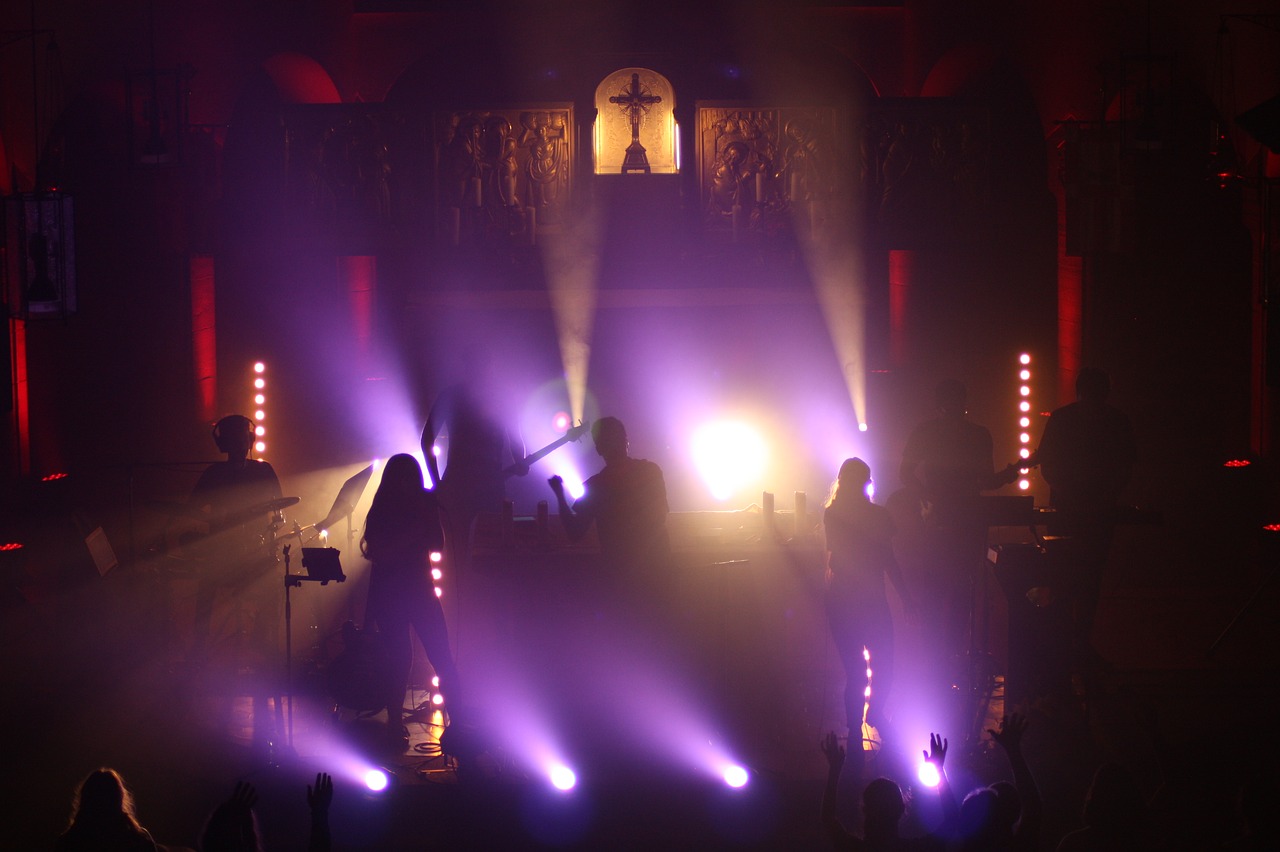
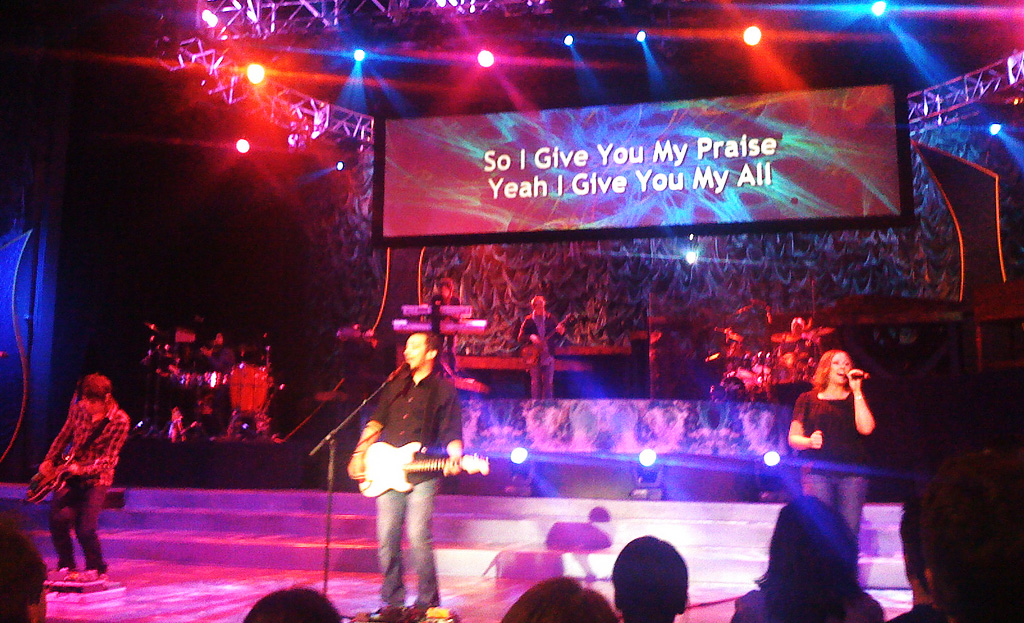
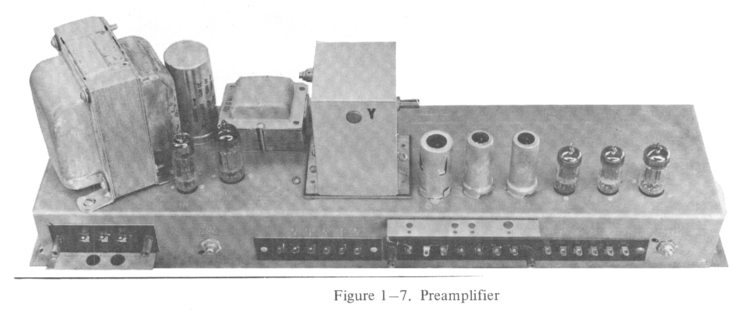
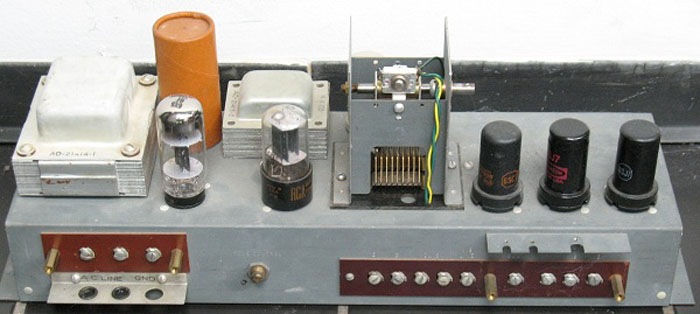

20 thoughts on “Church Sound Systems”
Thank you so much for this info. This broke down everything to easy to understand nuggets of info. Two thumbs up!
Thanks allot! GOD BLESS! ☺
Thank you May God Be With you
This is some GREAT information! Thanks so VERY much for sharing!
THANKS VERY MUCH
I attend a small church, it has an adequate sound system for the most part. But we have several that are extremely hard of hearing and even though they have hearing aids the can not hear well. My question is there any thing we can mount in front of where the sit that they can plug in earphones. If we could get that installed it would help many.
Thanks for your help
Dave
I would look at hearing assistance devices. We use a Williams system that uses a receiver and earpiece. Also includes a device that works the t-coil in more modern hearing aids
For hard of hearing there are wireless transmitters which can be connected to the line output of a mixer, which sends a signal to a receiver with an earphone jack which hard of hearing people can use to hear at a comfortable level.
Sir,
I have at our church a 30 watt Radio Shack amplifier, having two 1/4″ mic inputs. There are four speakers connected via 70volt line to the amp. My issue is that the mic volume controls have to be turned up to the extreme, and then the volume is not sufficient. Added to this I have put in parallel to one of these a wireless mic, which is very “hot”.
I believe my issue is that a larger wattage amp is needed that has 4 channels or mic inputs.
Please help me with this problem.
Thanks for listening and providing some assistance.
Bill
Need to get sound board wired in Bethlehem, PA area any suggesting.
Thank you brother. It was meaningful and helpful information above there. My church size is 60 feet long and 26 feet wide. How much you think i need sound wattage? Presently i have very small, just because we did not invest much on it. Now planning to invest bit more. Please get back to me with required information.
Thanks
my church is 2000 capacity seater hw much sound wattage do i need
Sir,
Good day sir.. I’m from Philippines we are building a new church now and its floor area covers almost 400 sq. m.. Our Pastor decided to invest new materials or gadgets for it. They suggests that will it be okay to have only 2 amps, 1 EQ or 1 Crossover and 1 soundboard.. Sir will it be fitted to our church to have 4 bass speaker rated 600 watts, 8-ohms each connected to 1 power amp and 4 midhigh speakers rated 500 watts, 8-ohms each also connected to the another amp.. sir can you suggest me if what type of speaker should we use and an amplifier that is suitable for, the EQ also or Crossover.. or anything sir that will suit for the said area also it is an open type..
Thank you sir. Hope for your kind response..GOD BLESS
Thanks for the information..
Hi,
Keyboard player says he never has enough volume (plays by ear) in his monitor (even though I have it turned high) so he turns volume on keyboard wide open which causes it to distorts through the PA system… How do I deal with this so it sounds good while he hears himself.
really helpful thank you
Glad to help.
Hi, I would like know if it’s possible to run two monitors on stage and produce monitoring for the whole band, I’ve been told to do so cause of the budget. In my experience I have never done such. There are 5 backup singers who have their own mics, lead singer, guitar, pino and drums. Pastor also joins worship before his take takes the stage.
Dear Mr. Benton,
I am installing a system in a small church. We won’t have instruments, just a lavaliere mic along with a hand-held mic. The rooms are divided, with line of site, but the need for amplification for soft-spoken speakers.
What kind of amplifier would you recommend?
Many thanks
Comments are closed.